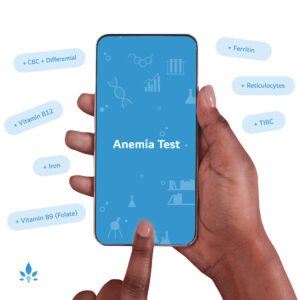Painful periods: Are They Normal or not?


Dysmenorrhoea is the term used to describe painful periods. Dysmenorrhoea is the most common gynaecological problem, affecting many women at some point during their menstruating years. Exact prevalence is difficult to ascertain, but it is thought that up to 80% of women suffer from painful cramps and related symptoms during their period.
Dysmenorrhoea is broadly categorized as being either primary or secondary. Primary dysmenorrhoea means that there is no underlying pathology; secondary dysmenorrhoea is always accompanied by a specific pelvic pathology. The most common form of secondary dysmenorrhoea is endometriosis; however, to put it into perspective, only about 10% of women who experience painful periods will be diagnosed with secondary dysmenorrhoea. Thus, the vast majority have primary dysmenorrhoea.
Primary dysmenorrhoea
Normal painful periods, primary dysmenorrhoea, usually occur for the first time 6-12 months after a girl gets her first period. The most common symptom is a cramping pain in the lower abdomen. Other symptoms include backache, headaches, diarrhoea, nausea and vomiting. The cramps normally last for between eight and 72 hours, coinciding with the start of menstrual flow. Stress and an unhealthy lifestyle (poor diet, smoking and obesity) are thought to exacerbate the condition and it is generally worse in those who have heavy periods. Some women notice an improvement in symptoms over time, particularly post-childbirth.
Secondary dysmenorrhoea
Endometriosis is not the only cause of secondary dysmenorrhoea; other conditions that affect the pelvis, such as fibroids, pelvic inflammatory disease (PID), polyps and adenomyosis, are also frequently associated with painful periods.
The major differences between primary and secondary dysmenorrhoea are that the latter can start at any time, often not affecting women until they reach their 30s or 40s; in addition, the timing and duration of pain can be different, as can the accompanying symptoms. With secondary dysmenorrhoea, the pain may be longer-lasting, or constant. Women often report heavy or irregular periods, dyspareunia and bleeding between periods. Ultrasound investigation can be used to identify any pelvic abnormality, aiding diagnosis.
Sometimes secondary dysmenorrhoea is accompanied by infertility. Secondary dysmenorrhoea also has a familial link, so is more likely in women who have a close female relative with the condition.
What causes dysmenorrhoea?
Dysmenorrhoea is usually triggered by an excess of prostaglandins. These specialised compounds have hormone-like properties and are released by the cells of the endometrium just prior to the start of menstruation. They stimulate the uterus to contract, which encourages the endometrial lining to shed. These contractions are responsible for the painful cramps characteristic of dysmenorrhoea. Furthermore, the localised blood vessels are compressed, reducing oxygen flow and triggering the activation of nearby pain receptors. The evidence for an involvement of prostaglandins comes from the discovery that women who experience severe period pain have higher levels of prostaglandins in their menstrual flow. Conditions such as endometriosis have also been shown to induce an inflammatory response, resulting in the release of additional prostaglandins.
In conclusion, painful periods affect many women, but endometriosis will probably be diagnosed in fewer than 10% of cases. If dysmenorrhoea is negatively impacting your quality of life, or you are experiencing any of the other symptoms associated with the secondary form of the condition, it is recommended that you speak with a healthcare professional. At the very least, they will be able to offer advice on how to alleviate the painful cramps.
Nabta is reshaping women’s healthcare. We support women with their personal health journeys, from everyday wellbeing to the uniquely female experiences of fertility, pregnancy, and menopause.
Get in touch if you have any questions about this article or any aspect of women’s health. We’re here for you.
Sources:
- Osayande, A S, and S Mehulic. “Diagnosis and Initial Management of Dysmenorrhea.” American Family Physician, vol. 89, no. 5, 1 Mar. 2014, pp. 341–346.
- Proctor, M, and C Farquhar. “Diagnosis and Management of Dysmenorrhoea.” BMJ, vol. 332, no. 7550, 13 May 2006, pp. 1134–1138., doi:10.1136/bmj.332.7550.1134.
- Period Pain. NHS, www.nhs.uk/conditions/period-pain/. Page last reviewed: 28/07/2016.













































